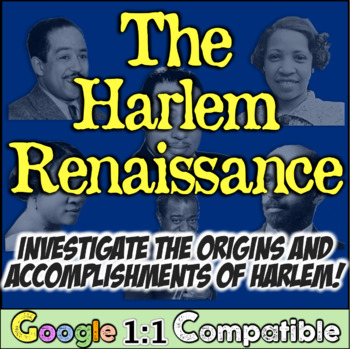Harlem Renaissance and Great Migration Activity and Reading | 2 activities!
- Zip
- Google Apps™

What educators are saying
Description
In Harlem Renaissance and Great Migration student reading and research activity, students learn the origins of (and contributors to) the movement that resulted from the Great Migration. Students begin with an introductory text on the Great Migration and Harlem Renaissance with guided questions to review the essential material. Then, students transition to an activity that allows them to learn more about 7 of the major contributors to the Harlem Renaissance. Students will use QR codes to investigate text and videos to learn about the contributions of Duke Ellington, W.E.B. Du Bois, Madame CJ Walker, Langston Hughes, Louis Armstrong, Lois Mailou Jones, and A. Philip Randolph to the Harlem Renaissance in American History. A final writing prompt is included to recap the assignment!
This resource is included in my Roaring 20s, 1930s, Great Depression Bundle!
A Google 1:1 compatible version is included in this product! Use in either a traditional setting or in the 1:1 environment!
A key is included!
Enjoy!





